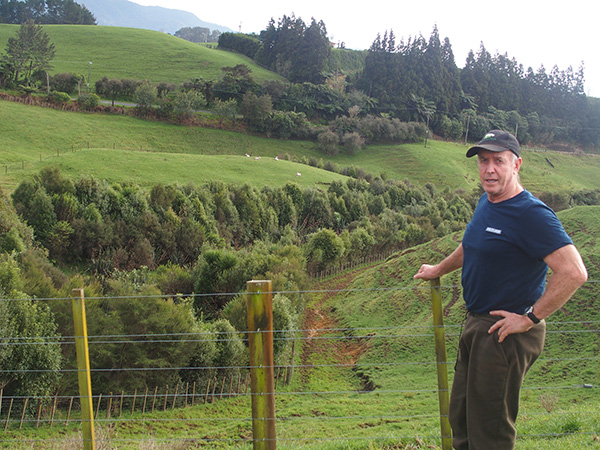Dairy farmers could expect to pay an extra $6200 and a hill country sheep and beef farmer $7200 a year from 2025 if the Government adopts He Waka Eke Noa’s recommendations for pricing agricultural emissions.
Those recommendations, released in a report for Government Ministers, suggested pricing methane at 11 cents per kilogram.
That figure could lift to $20,500 for dairy farming and $24,500 for sheep and beef farming by 2030 if a 35 cents per kilogram price is used.
The costs are calculated using AgFirst’s dairy and sheep and beef farm models for Waikato-Bay of Plenty, which it uses for its annual financial survey.
AgFirst agricultural economist Phil Journeaux said the 11c/kg price in the report was an indicative price only, with the actual price yet to be determined.
Regardless of what it was, it will add a cost to farmers and there was a limit to what farmers can bear.
If the price was hiked up too high, he feared it will result in more hill country being planted in trees.
“There’s no magical mathematical formula that they can use. They have to weigh up what the impact will be on farm verses making sure that the cost is enough to incentivise farmers to change.”
Whether it has that balance right is yet to be determined, he said.
“It certainly will impose a cost on farms, how strong that is to enforce change remains to be seen.”
The cost was higher on the drystock farming model because the amount of the levy as a proportion of their EBIT was higher compared to a dairy farm on average, he said.
The 11c/kg starting price for methane is the equivalent of 5% of $85/t of carbon dioxide – which Journeaux said is what the anticipated ETS price would be in 2025 – if biological emissions were included in the ETS.
“There’s no magical mathematical formula that they can use. They have to weigh up what the impact will be on farm verses making sure that the cost is enough to incentivise farmers to change.”
Phil Journeaux
AgFirst
The current toolbox for farmers to reduce their emissions was slim, given that emissions are driven by the amount of dry matter eaten by stock, protein in the diet and nitrogen fertiliser used.
Farmers will have to look at how those three things can be reduced while remaining financially viable, he said.
“In terms of flicking to a low-carbon system, you cannot do that overnight. Farming is a biological system and it will take most farms several years to transit to a lower carbon emitting system.”
The main thrust of the recommendations: A split gas approach and emissions being priced at the farm level came as no surprise because both had been widely supported by farmers in industry consultation, he said.
He viewed the yearly emissions reporting that it proposes as no different to a farmer having to declare a tax return and those returns will be audited.
He was optimistic that the Government will adopt the recommendations, although he expected some fine tuning.
“It comes down to politics: If you’re a politician in Wellington, do you go with a plan that farmers don’t particularly love but at least accept – which is He Waka Eke Noa – or do you wack them into the ETS, which 100% of them oppose?”
If they choose the latter, he predicted they would have a massive fight on their hands.
Bay of Plenty farmer Rick Burke wrote to HWEN programme director Kelly Forster in March urging it to adopt an alternative approach to pricing emissions that was based on the level of intensity.
This was done because of concerns that a single pricing framework across all farm systems was not fair or equable.
At first glance, Burke said the recommendations put forward justified those concerns.
“The pricing doesn’t reflect that. The sheep and beef sector has a very low impact and you can argue that sheep shouldn’t be taxed at all because of the gains that have been made since 1990.
“The price doesn’t reflect that progress.”
He said AgFirst’s 35c/kg emissions price for sheep and beef farmers by 2030 could cripple them.
The tax collected from emissions should be redirected into helping farmers redesign their farms and future-proof them.
However there still were opportunities for farmers to discuss it with both HEWN and the Government over the coming months to make it fairer to farmers.
“Hopefully there’s still scope for groups like ours and others to have meaningful conversations with government officials to ensure things can be tweaked to ensure that we don’t end up with perverse effects.”










